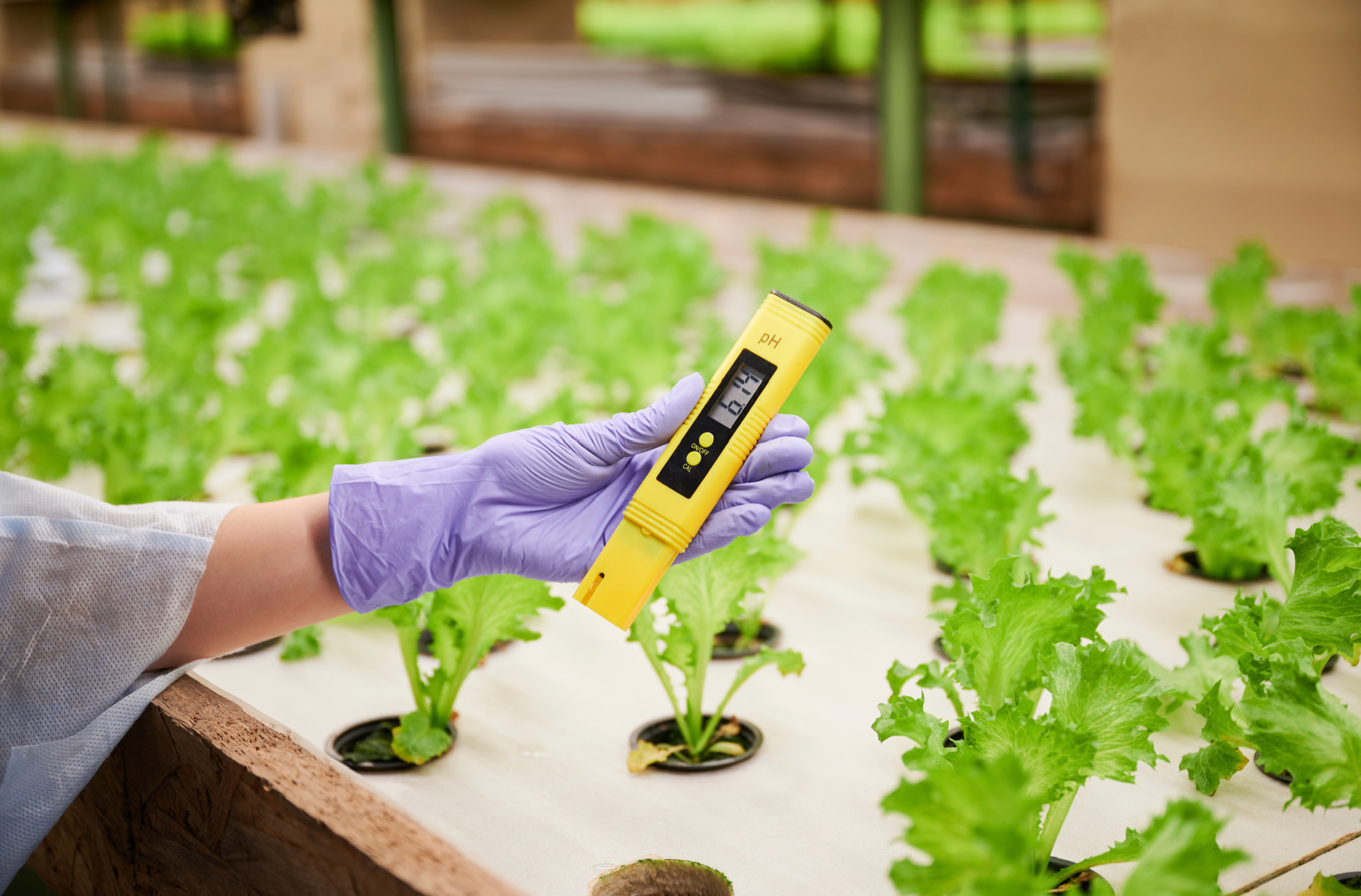Hydroponic Setup Costs and Advice
Guidance on Hydroponics Setup Costs
Hydroponics is becoming more and more popular, and for a good reason. It’s an efficient way of growing food indoors without having to rely on the weather, which can be so volatile. In addition, you don’t have to worry about soil quality and fertility, and hydroponic gardens also get much fewer pests and diseases. Furthermore, hydroponics uses up to 90% less water than traditional gardening, and plants grow 30–50% faster because nutrients are being delivered straight to their roots, so they can focus on growing and developing instead of having to search for nutrients in the soil. With that said, setting up a hydroponic system can be more expensive than starting a traditional garden, but I personally think that the benefits of hydroponic gardening are definitely worth the increased initial costs. In this article, we will cover everything that goes into setting up a hydroponic system and hydroponic setup costs.
Hydroponic System
Essentially, you have two options when it comes to setting up a hydroponic system: you can either buy a kit or build a system yourself. Building your own hydroponic system is not as difficult as it might seem, and we have articles here that cover different types of hydroponic systems and how to build them.
However, let’s first take a look at hydroponic kits. Their main benefit is that they have everything you need to build a system, and all you have to do is to assemble it. However, customisation options can be limited, plus kits are generally more expensive than buying parts yourself and building a system. Depending on the type of system and the size, prices of hydroponic kits vary greatly, but generally, you would typically pay anywhere between £50 and £500 for a hydroponic kit. You can find great kits at around £100–300, and these will allow you to grow a decent number of plants.
Building your own system is a better option if you want a system that you can customise to suit your needs perfectly. As mentioned previously, you can find articles that cover different types of hydroponic systems and how to build them here. You can find parts and equipment here.
Again, the cost of building a DIY hydroponic system will vary greatly depending on the type and size of the system. You can build a simple DWC (deep water culture), Kratky, or wick system using household items, but if you want a more complicated system, such as NFT (nutrient film technology), ebb and flow, or drip system, it will cost you anywhere between £50 and £200 (but it could be more) depending on the size of the system.
Grow Lights
People often take up hydroponics because they want to grow their own vegetables, fruits, and herbs, but they don’t have an outdoor space for a garden. When growing indoors, it’s important to match the natural sunlight requirements for your plants. This can easily be done by using grow lights.
All hydroponic lighting systems have 4 different components: bulbs, a reflector hood, a remote ballast, and a timer. You buy these parts separately, or you can buy a kit that will have everything you need. If you buy parts for your grow lights separately, I’d suggest buying a ballast as a set with bulbs because their wattage must match. The cost of grow lights will vary depending on the type of grow lights and their wattage. As for wattage, a rule of thumb is to have 250–500 watts per square meter of grow space. This means a 1000-watt grow light can cover 2–4 square meters.
The most common types of grow lights are LED, fluorescent, metal halide (MH), and high-pressure sodium (HPS) grow lights. You can find articles covering each of these types of grow lights to find out more about their benefits and how to choose the right grow lights for your system here.
A 1000-watt MH or HPS grow light kit will cost you around £170–190. LED grow lights are generally more expensive, but they last longer, run cooler, and full-spectrum LED lights can be used at any growth stage, which means you won’t need to change bulbs, unlike with MH/HPS grow lights. A decent LED grow light kit can cost anywhere between £300 and £500 (and even more if you need more powerful grow lights), but in my experience, they are definitely worth it.

Grow Room/Tent
You can set up a hydroponic system practically anywhere that has access to electricity and water, but if you want a dedicated grow room, it will need some work. Alternatively, if you’re limited for space, you might want to consider getting a grow tent.
Grow Tents
Grow tents usually have a frame that is covered with fabric and has vents to allow ventilation. They come in a variety of sizes and with plenty of features that allow you to have better control over the growing environment of your plants. Grow tents allow you to use the extra space in any room to grow plants. If you can't dedicate a whole room to indoor growing, you can certainly find space to set up a grow tent. Many grow tents come with a ready-made frame that can be installed in no time. In addition, most grow tents come with reflective walls that reflect the light and help your plants absorb as much light as possible. They are quite affordable too—you can get a smaller grow tent for around £50–100 or a larger one for £100–200.
Setting Up a Grow Room
If you want to set up a grow room, the good news is that your grow room setup can be very simple and inexpensive, or you can outfit every detail to be as efficient and convenient as possible. The best part about setting up a grow room is that every single decision is yours to make. We have a detailed article on setting up a grow room here, but in essence, the most important things to consider when setting up a grow room are flooring, making the grow room light tight, painting the walls or covering them with reflective sheeting, and setting up a ventilation system.
The costs of setting up a grow can vary greatly depending on what you’re working with and how advanced you want your setup to be, but in most cases, you can set up a great grow room for just a few hundred pounds.
Flooring
You don’t want to have any carpeting in your grow room because it will hold moisture and house bugs and bacteria. Concrete floors are commonly used in grow rooms because they are relatively cheap and easy to clean. You can cover your floors with water-resistant materials, like cementitious urethane, and while it can cost quite a bit, it’s definitely worth it because it will make it much easier to clean your grow room and you won’t have to worry about spills too much. You can also use pond liner or other type of rubber sheeting that repels water.
Making the Grow Room Light Tight
You will need to make your growing space light tight to prevent the light from your grow lights from escaping and also prevent the natural light from interfering with your lighting cycle. If there’s a small window or natural light source in your grow room, block it off or light trap the area with total blackout reflective sheeting.
Walls
Ideally, you should paint your walls white or cover them with reflective sheeting. Reflective sheeting is more expensive than simply painting the walls, but it does two great things. Firstly, it stops light from escaping. Secondly, it keeps natural light out of your setup. This way, it doesn't interfere with your lighting cycle.
There are different types of reflective sheeting, like Orca and Reflex Diamond. The shinier it is, the better. You can also paint your walls white. Flat white paint can reflect as much as 85% of the light that hits it. Look for the light reflectance value (LRV) ratings on cans of paint.
Setting Up a Ventilation System
Air is invisible, which is why we often forget it exists. However, we cannot live without it and neither can plants for that matter. So, if you’re growing indoors, you’ll need to think about grow room ventilation. Without proper ventilation, your plants won’t grow well and you’ll get poor harvests.
Grow room ventilation is essentially a system that ensures a continuous flow of air between the outside and your indoor growing area. It can also include mechanisms for air circulation inside the grow room.
At a very minimum, you will need an exhaust fan to remove the old air, and oscillating fan for air circulation inside the grow room, and an opening for bringing in fresh air, which could be a hole or an open window, but it should have a net to keep away bugs and filter out large particles. You can find a detailed article on setting up a ventilation system on our website here.
For more great content check out the Proponics YouTube channel below!

By Max Barnes
Max Barnes is a long-time homesteader and author. Max grows the majority of his own food year-round using a variety of different methods, including hydroponics. Hydroponic gardening plays a huge part in his homestead and self-sufficiency goals.




